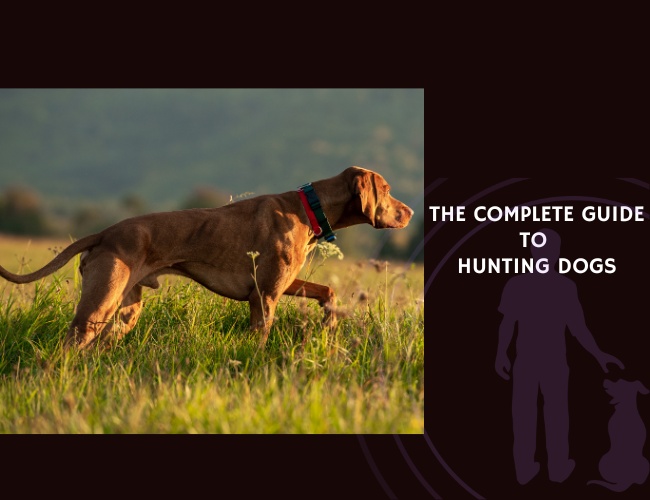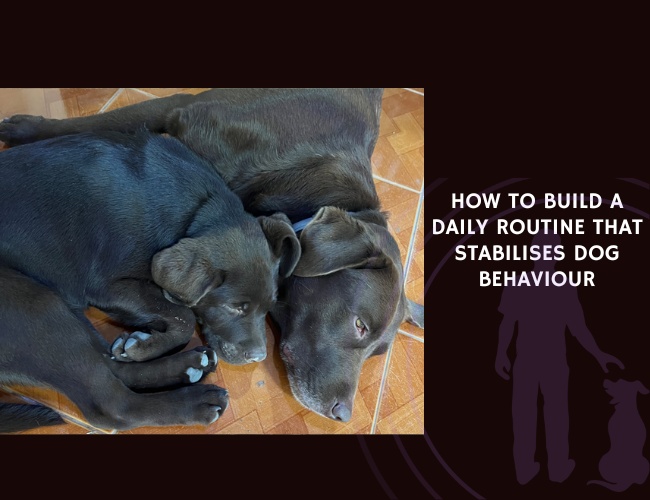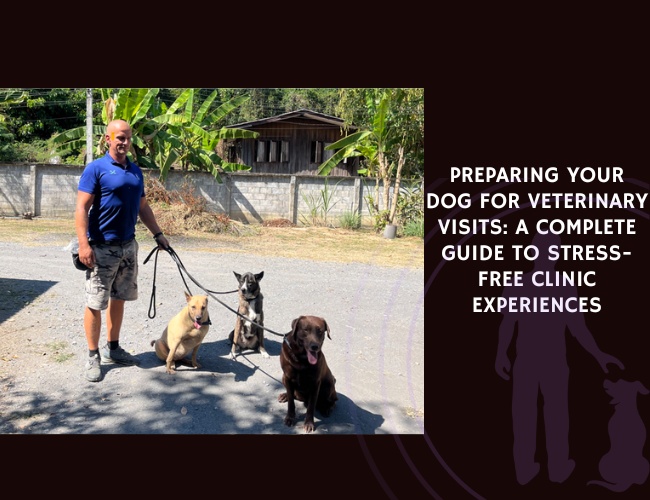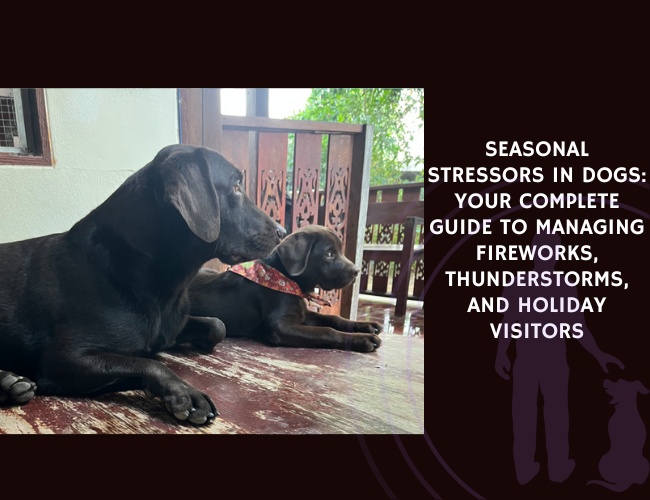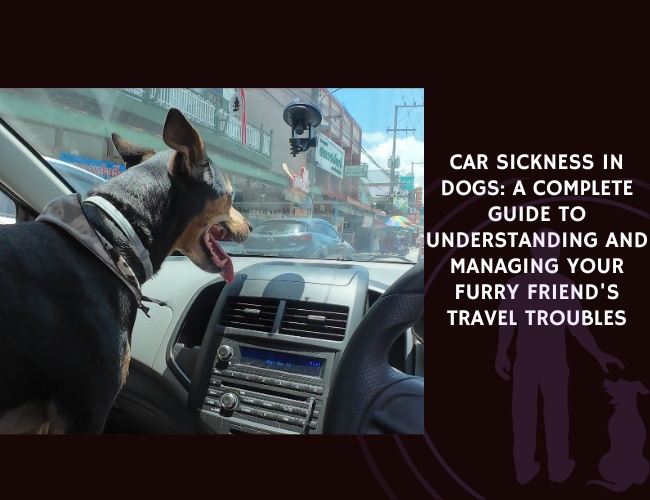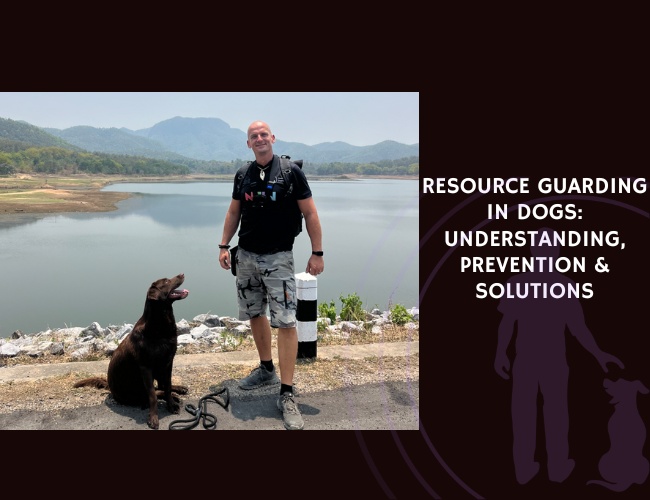Introduction: A Partnership Forged Through Millennia
When you watch a pointer freeze mid-stride in a meadow or witness a retriever plunge into icy waters without hesitation, you’re observing the result of thousands of years of co-evolution between humans and dogs. This remarkable partnership, born from mutual survival needs and refined through selective breeding, has created some of the most specialized and capable working animals on our planet.
Did you know that your hunting dog’s olfactory bulb is approximately 30 times larger than yours? This incredible sensory advantage, combined with behavioral traits honed over centuries, makes these dogs irreplaceable partners in the field. Whether you’re a seasoned hunter, considering a hunting breed as a family companion, or simply fascinated by canine capabilities, let us guide you through the remarkable world of hunting dogs. 🐾
From the ancient sight hounds depicted in Egyptian tombs to modern conservation detection dogs protecting endangered species, hunting breeds represent a living bridge between our past and future. Today, we’ll explore how these extraordinary animals think, work, and thrive—and how you can build a trusting relationship that honors their heritage while meeting modern needs.
Character & Behavior: Understanding Your Hunting Dog’s Mind
The Neurobiological Blueprint
When you look into your hunting dog’s eyes, you’re seeing the product of sophisticated neurological architecture. Recent DTI imaging studies have revealed that hunting breeds possess extensive white matter networks extending from their olfactory bulb—a structure that contains between 200 million to 1 billion olfactory receptors. This means your furry friend experiences the world through a sensory lens we can barely imagine.
Breed-Specific Behavioral Traits manifest in fascinating ways. You might notice your pointer naturally freezing when detecting interesting scents during a casual walk, or your retriever obsessively carrying objects in their mouth. These aren’t quirks—they’re hardwired behaviors selected over generations. Research has identified 59 genes under positive selection in sport-hunting breeds, with 11 directly related to athletic performance, affecting everything from muscle contraction to cardiovascular function.
The Cooperative Nature of hunting dogs sets them apart from many other working breeds. Studies show that successful detection dogs require high play and food drive combined with low prey drive—a delicate balance that allows them to work alongside humans without becoming distracted by the very game they’re meant to find. Interestingly, this cooperability varies by breed, with Labrador Retrievers showing higher willingness to please compared to German Shepherds in research settings.
What does this mean for you? Understanding these innate drives helps explain why your hunting dog might seem “obsessed” with certain activities. That Brittany Spaniel who won’t stop pointing at butterflies in the backyard? They’re simply expressing centuries of genetic programming. Recognizing and channeling these behaviors appropriately is key to a harmonious relationship.
Vocalization & Communication: How Your Hunting Dog “Talks”
The Language of the Hunt
Your hunting dog’s communication style reflects their specific breeding purpose, and understanding these vocalizations can deepen your bond significantly. Unlike many companion breeds, hunting dogs have developed distinct vocal patterns that served practical purposes in the field.
Scent Hounds and Their Songs are perhaps the most vocal of all hunting breeds. That distinctive baying you hear from a Beagle or Bloodhound isn’t random noise—it’s a sophisticated communication system. When tracking, these dogs use different tones to indicate:
- Trail strength (louder, more excited baying for fresh scent)
- Prey type (experienced hunters can distinguish between rabbit and deer trails by their dog’s voice)
- Distance and direction (allowing hunters to follow even when the dog is out of sight)
Silent Workers and Subtle Signals characterize many pointing and flushing breeds. Your English Setter might rarely bark during work, instead communicating through:
- Body tension and tail position
- Breathing patterns (watch for that distinctive snorting when they’re onto something)
- Eye contact and head positioning
Retrievers and Their Soft Mouths have been selected for quiet work, but they’re incredibly expressive through physical communication. You’ll notice your Golden or Lab uses gentle mouth touches, leaning behaviors, and what handlers call “the nudge” to communicate needs and desires.
Understanding these communication styles helps you recognize when your hunting dog is stressed, excited, or trying to alert you to something important. That whine at the door might not just mean “I need to go out”—it could be your dog detecting wildlife in the yard that you haven’t noticed yet. 🧠
Training & Education: Building on Natural Instincts
From Traditional Methods to Modern Science
The landscape of hunting dog training has undergone a remarkable transformation. Where once force-based methods dominated—including shock collars and force fetch techniques—modern trainers are discovering that positive reinforcement often produces superior results. Research consistently shows dogs trained with reward-based methods respond faster to commands and display fewer problematic behaviors.
Understanding Drive vs. Instinct is crucial for effective training. Your hunting dog possesses:
- Hunt drive: The desire to search and explore
- Prey drive: The urge to chase and capture
- Pack drive: The need to work cooperatively with you
Balancing these drives requires patience and understanding. You might notice your young pointer wants to chase every bird they see rather than holding point. This isn’t disobedience—it’s prey drive overriding hunt drive. Training involves reinforcing the desired behavior (pointing) while managing the natural impulse (chasing).
The Power of Positive Reinforcement has revolutionized hunting dog training. Modern techniques focus on:
- Marker training (using clickers or verbal markers to capture exact moments)
- Environmental rewards (allowing the dog to flush after a successful point)
- Play-based learning (using retrieve games to build recall)
Even in traditionally punishment-heavy areas like force fetch, trainers are finding success with shaped retrieve methods that build on the dog’s natural desires rather than forcing compliance. This approach not only produces more reliable workers but also strengthens the human-dog bond essential for fieldwork.
Age-Appropriate Training Stages help you set realistic expectations:
- 8-16 weeks: Socialization and basic obedience
- 4-6 months: Introduction to birds and basic fieldwork
- 6-12 months: Steadiness training and advanced commands
- 12+ months: Polishing and specialized skills
Remember, your hunting dog’s brain continues developing until about two years old. Pushing too hard too early can create anxiety and undermine natural abilities. Trust the process, and you’ll be rewarded with a confident, capable partner. 😄
Step-by-Step Training Progressions
Teaching Steadiness to Wing (For Pointing Breeds)
Getting your pointer to remain steady when birds flush is perhaps the most challenging skill to develop. Here’s a proven progression that respects your dog’s instincts while building control:
Week 1-2: Foundation Work
- Start with no birds, just a wing on a fishing pole
- Have your dog on a check cord (30-foot light rope)
- Walk together, suddenly plant the wing and say “whoa”
- Reward stillness for 2-3 seconds initially
- Gradually increase duration to 30 seconds
Week 3-4: Adding Movement
- While dog holds point on planted wing, you circle them
- Toss small bumpers past them while they hold
- If they break, calmly return them to position (no punishment)
- Reward successful holds with retrieve of bumper
Week 5-6: Live Bird Introduction
- Use dizzy pigeons (gently spun to disorient temporarily)
- Plant bird in light cover where you know location
- Approach with dog on check cord
- When point established, wait 10 seconds before flush
- Keep dog steady through flush and shot (blank pistol)
Week 7-8: Proofing and Distance
- Graduate to fully alert birds
- Work at varying distances
- Add distractions (other dogs, different terrain)
- Practice “stop to flush” when birds launch unexpectedly
Water Introduction for Retrievers
Water confidence can’t be forced—it must be cultivated. Here’s how to create a water-loving retriever:
Stage 1: Positive First Impressions (8-12 weeks)
- Choose warm, shallow water with gradual entry
- You go in first, encouraging puppy to follow
- Bring floating toys but don’t throw them yet
- Keep sessions under 5 minutes
- End on success (even just wet paws counts)
Stage 2: Building Drive (3-4 months)
- Start with retrieves on land near water
- Gradually throw closer to water’s edge
- “Accidentally” have bumper roll into shallows
- Celebrate enthusiastically when puppy enters water
- Never throw beyond swimming depth yet
Stage 3: Swimming Development (4-6 months)
- Use water wings (bird wings attached to bumper) for motivation
- Throw parallel to shore, not straight out
- Gradually increase distance along shoreline
- Introduce gentle current situations
- Add decoys as confidence builds
Stage 4: Advanced Water Work (6+ months)
- Multiple retrieves in sequence
- Blind retrieves in water
- Delivery to hand in water
- Working through cover and obstacles
- Cold water conditioning (gradually)
Force-Free Retrieve Training
Modern retrieve training builds on natural desire rather than force. This method takes longer but produces happier, more reliable retrievers:
Phase 1: Building Value (2 weeks)
- Make retrieve objects the source of all good things
- Feed meals from dummy
- Play tug with bumpers
- Hide treats inside canvas dummies
- Dog should become obsessed with retrieve items
Phase 2: Shaping the Hold (2-3 weeks)
- Click/mark any interaction with bumper
- Progress to mouth contact, then holding
- Build duration gradually (1 second to 30 seconds)
- Add movement while holding
- Practice in different locations
Phase 3: The Pickup (2-3 weeks)
- Place bumper on ground, wait for pickup
- Click/reward for lifting bumper
- Add “fetch” command once behavior is reliable
- Increase distance to bumper gradually
- Introduce different objects
Phase 4: Delivery Development (3-4 weeks)
- Shape coming toward you with object
- Reward closer deliveries progressively
- Add “hold” command for delivery to hand
- Practice with distractions
- Proof in field conditions
Troubleshooting Common Training Problems
Problem: “My pointer chases instead of holding point”
Likely Causes:
- Introduced to flushes too early
- Prey drive overwhelming training
- Insufficient foundation work
- Genetics (some lines more chase-prone)
Solutions:
- Go back to wing-on-string work for 2 weeks
- Use a check cord for all bird work temporarily
- Practice “whoa” command separately from birds (during walks, feeding)
- Work with calmer birds (coturnix quail vs. pheasant)
- Have helper flush while you focus on dog control
Prevention:
- Don’t allow self-rewarding chases ever
- Build steadiness before allowing any flushes
- Use proper introduction progression
- Select breeding for steadiness traits
Problem: “My retriever won’t give up the bird”
Likely Causes:
- Resource guarding tendencies
- Forced delivery attempts creating conflict
- Excitement overriding training
- Previous punishment for delivery issues
Solutions:
- Trade system: Offer high-value treat for release
- Two-toy method: Show second bumper to trigger drop
- Corner delivery: Back into corner so dog must come close
- Eliminate chase games temporarily
- Practice delivery with boring objects first
Prevention:
- Never chase dog with bird
- Build delivery habits with non-exciting objects
- Reward delivery more than retrieve
- Keep sessions positive and short
Problem: “My dog breaks on the flush/shot”
Likely Causes:
- Excitement exceeding impulse control
- Insufficient steadiness foundation
- Moving too fast through training stages
- Handler anxiety transmitting to dog
Solutions:
- Return to planted bird work with check cord
- Add “silent flushes” (no shot) to reduce stimulation
- Practice impulse control separately (wait for meals, doors)
- Use remote bird launchers for consistent practice
- Have training partner handle dog while you flush/shoot
Prevention:
- Build foundation for months before live flushes
- Proof steadiness in incrementally harder scenarios
- Don’t test hunt until training is solid
- Maintain training throughout hunting season

Training Schedule Templates
Pre-Season Conditioning Schedule (8 weeks before opening day)
Weeks 1-2: Foundation Reset
- Monday: Obedience refresher (15 mins)
- Tuesday: Fitness walk/swim (30 mins)
- Wednesday: Scent work/tracking (20 mins)
- Thursday: Rest day
- Friday: Steadiness drills, no birds (15 mins)
- Weekend: Long conditioning hike (1-2 hours)
Weeks 3-4: Skill Building
- Monday: Bird work with check cord (30 mins)
- Tuesday: Water retrieves (20 mins)
- Wednesday: Obedience under distraction (15 mins)
- Thursday: Rest day
- Friday: Marking drills (25 mins)
- Weekend: Simulated hunt scenario (2-3 hours)
Weeks 5-6: Intensity Increase
- Monday: Multiple bird contacts (45 mins)
- Tuesday: Fitness and swimming (40 mins)
- Wednesday: Blind retrieves (30 mins)
- Thursday: Light conditioning
- Friday: Steadiness with gunfire (30 mins)
- Weekend: Group training with distractions
Weeks 7-8: Final Preparation
- Monday: Full hunting simulation
- Tuesday: Recovery and massage
- Wednesday: Polishing problem areas
- Thursday: Rest
- Friday: Light bird work
- Weekend: Easy conditioning, mental preparation
Off-Season Maintenance (Non-hunting months)
Monthly Focus Rotation:
- Month 1: Obedience and house manners
- Month 2: Fitness and body conditioning
- Month 3: New skill introduction (tricks, agility)
- Month 4: Scent work and tracking
Weekly Structure:
- 2x formal training sessions (20-30 mins)
- 3x physical exercise (varied activities)
- Daily mental enrichment (puzzles, games)
- Weekend adventure or socialization
Case Studies: Real Dogs, Real Solutions
Case 1: “Bella” – The Gun-Shy Brittany
Background: 2-year-old female, excellent natural point, developed gun-shyness after improper introduction to gunfire at 6 months.
Initial Assessment: Would leave field at sound of distant gunfire, showed stress signals even with cap guns, associated anxiety affecting overall performance.
Rehabilitation Process (6 months):
- Months 1-2: Counter-conditioning with recordings
- Played gunshot sounds during meals (barely audible)
- Gradually increased volume over weeks
- Paired shots with favorite activities
- Months 3-4: Distance desensitization
- Helper shot .22 blanks 200 yards away during play
- Gradually decreased distance as comfort increased
- Always ended sessions on positive note
- Months 5-6: Field integration
- Returned to bird work without guns initially
- Added shots when dog intensely focused on point
- Built positive associations with hunting success
Outcome: Bella now hunts confidently, though still prefers 20-gauge to 12-gauge. Owner maintains positive associations with regular reinforcement.
Case 2: “Duke” – The Hard-Mouthed Labrador
Background: 3-year-old male, excellent marking ability but consistently damaged birds, making game unsuitable for table.
Initial Assessment: Learned to clamp down during early force-fetch training, anxiety-related response to delivery pressure.
Rehabilitation Process (4 months):
- Month 1: Complete retrieve retraining
- Stopped all bird retrieves temporarily
- Rebuilt delivery using only soft bumpers
- Shaped gentle hold with clicker training
- Month 2: Texture progression
- Introduced various textures (tennis balls, dokken, canvas)
- Rewarded soft mouth heavily
- Used “easy” command for gentle pickup
- Month 3: Dead bird progression
- Started with frozen birds (harder to damage)
- Moved to thawed birds
- Finally fresh birds with supervision
- Month 4: Live bird conditioning
- Controlled flightless duck retrieves
- Immediate reward for gentle delivery
- Consistent “easy” reinforcement
Outcome: Duke now delivers 90% of birds undamaged. Owner continues reinforcement and avoids high-pressure situations that trigger hard mouth.
What Correct Behaviors Look Like
The Perfect Point should display:
- Intense focus on bird location with rigid body posture
- Tail elevated or extended (breed-dependent position)
- One front foot often raised (classic pointer stance)
- Complete stillness except for minor tail movement
- Maintained position despite distractions
- Eyes locked on bird location, not handler
- Breathing may be visible but controlled
- Natural positioning (not forced or mechanical)
The Ideal Water Entry shows:
- Confident approach without hesitation
- Smooth entry (not belly-flopping)
- Immediate swimming motion
- Head high, eyes on target
- Efficient path to retrieve
- No vocalization or stress
- Strong return swim
- Delivery without dropping at water’s edge
The Proper Delivery demonstrates:
- Direct return to handler without detours
- Sitting automatically at delivery (if trained)
- Holding bird gently until commanded release
- Bird positioned correctly in mouth (middle of body)
- No readjusting or playing with bird
- Eyes meeting handler’s
- Remaining in position after release
- Ready for next retrieve immediately
Driven. Skilled. Cooperative.
Heritage fuels instinct. Hunting dogs carry millennia of selective breeding in every stride, from pointers freezing mid-field to retrievers diving headlong into water. Their behaviors aren’t quirks but living echoes of ancestral purpose.
Neurobiology shapes behavior. With immense olfactory bulbs and specialized gene selection, these dogs process the world through scent and movement. Each pause, carry, or chase reflects neurological blueprints honed for precision work.
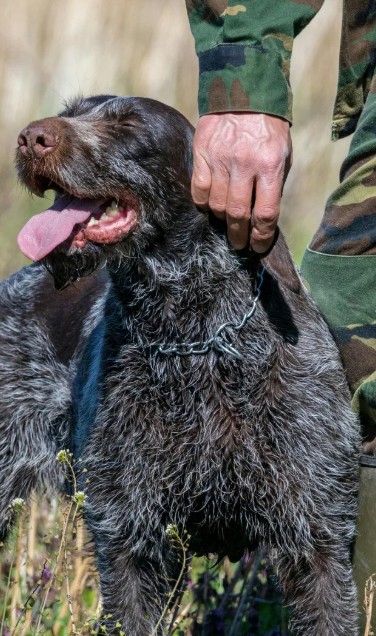
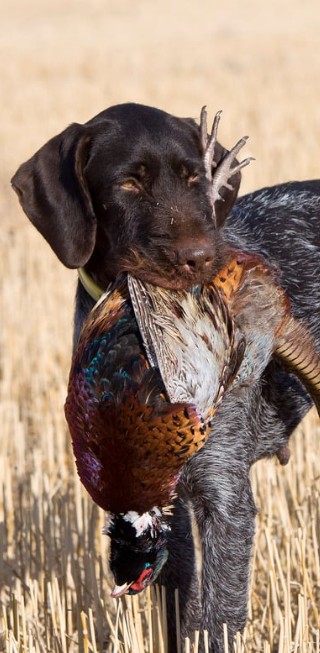
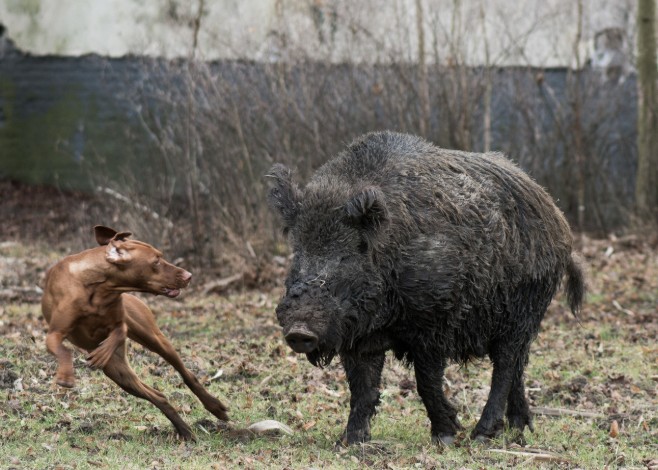
Partnership defines success. Unlike solitary workers, hunting dogs excel through cooperation. Their balance of drive and focus allows them to align seamlessly with humans, creating bonds built on trust, play, and shared goals.
Performance & Activities: Channeling Your Dog’s Natural Abilities
Beyond the Hunt: Modern Applications
Today’s hunting dogs excel in roles their ancestors could never have imagined. While traditional hunting remains important, these breeds now serve as conservation heroes, medical detectors, and search-and-rescue specialists. Understanding how to channel your dog’s abilities—whether for work or enrichment—ensures they live fulfilled lives.
Conservation Detection Work has emerged as a critical application for hunting breeds. Dogs deployed worldwide for wildlife conservation show remarkable success rates, with reported sensitivities ranging from 23.8% to 100%. Your hunting dog’s nose can detect:
- Endangered species scat for population monitoring
- Invasive plants before they become visible to humans
- Disease markers in wildlife populations
- Archaeological artifacts buried for centuries
Sport and Competition Options provide outlets for non-hunting owners:
- Nose work competitions: Harness scenting abilities in controlled environments
- Field trials: Test pointing, flushing, and retrieving skills without actual hunting
- Dock diving: Perfect for water-loving retrievers
- Tracking trials: Ideal for scent hounds
Daily Enrichment Activities are essential for hunting breeds in pet homes. Did you know that just five minutes of “brain work” can be as tiring as a thirty-minute walk? Try these activities:
- Scent trails using essential oils or treat placement
- Hide-and-seek games with family members
- Food puzzles that mimic foraging behaviors
- “Find it” games using favorite toys
The key is variety and challenge. Your hunting dog’s brain craves problem-solving opportunities. Rotating activities prevents boredom while satisfying different aspects of their hunting heritage. Watch how your Brittany’s entire demeanor changes when you hide treats around the house—that focused intensity is their working heritage shining through.
Nutritional Recommendations: Fueling the Athletic Hunter
Metabolic Demands of Working Dogs
Your hunting dog’s nutritional needs differ significantly from typical house pets. Those 59 genes affecting athletic performance we mentioned earlier? They influence everything from muscle development to energy metabolism. Understanding these unique requirements helps you make informed feeding decisions.
Caloric Requirements by Activity Level vary dramatically:
- Active hunting season: 2-3 times maintenance calories
- Training periods: 1.5-2 times maintenance calories
- Off-season maintenance: Standard caloric needs based on weight
- Senior hunters: Reduced calories but maintained protein levels
The challenge lies in adjusting nutrition seasonally. You might notice your pointer loses weight rapidly during hunting season despite eating more—this is normal but requires monitoring. Body condition scoring (feeling ribs and spine) becomes more important than scale weight.
Protein and Fat Ratios for hunting breeds should reflect their work:
- High-activity periods: 30-32% protein, 20-22% fat
- Maintenance periods: 26-28% protein, 14-16% fat
- Recovery meals: Higher carbohydrate content for glycogen replenishment
- Endurance work: Increased fat percentage for sustained energy
Timing and Portion Control affects performance significantly. Research shows:
- Feed main meals 12+ hours before intensive work to prevent gastric torsion
- Small snacks during work maintain energy without causing sluggishness
- Post-exercise feeding within 30 minutes optimizes recovery
- Multiple small meals reduce bloat risk in deep-chested breeds
Hydration Strategies are often overlooked but critical. Your hunting dog loses water through panting and activity at rates that would hospitalize humans. Ensure access to clean water, but limit intake immediately before and after intense exercise. Consider electrolyte supplements during extended work in hot conditions.
Remember, every dog is individual. That Labrador who seems to gain weight just looking at food has different needs than the high-strung Vizsla who burns calories pacing. Adjust recommendations based on your dog’s specific metabolism, age, and workload. 🧡
Health Concerns: Protecting Your Four-Legged Partner
Breed-Specific Vulnerabilities
While hunting dogs are generally robust, their specialized anatomy and intensive work create unique health challenges. Understanding these risks helps you provide preventive care and recognize problems early.
Orthopedic Concerns top the list for most hunting breeds:
- Hip and elbow dysplasia: Common in larger breeds like Labs and German Shorthaired Pointers
- Luxating patellas: Frequently seen in smaller hunting breeds
- Cruciate ligament tears: High risk due to explosive movements
- Arthritis: Develops earlier in working dogs due to joint stress
Early screening through OFA or PennHIP testing helps identify problems before breeding or intensive training begins. You might notice subtle changes—reluctance to jump, morning stiffness, or favoring one side—long before obvious lameness appears.
Sensory System Issues can devastate a working dog’s career:
- Progressive retinal atrophy: Genetic in many breeds
- Ear infections: Common in drop-eared breeds due to moisture retention
- Olfactory dysfunction: Can result from nasal injuries or infections
- Hearing loss: Both genetic and noise-induced
Regular ear cleaning becomes especially important for water-retrieving breeds. That musty smell from your Spaniel’s ears isn’t just unpleasant—it could indicate an infection that affects their hunting ability.
Field-Related Injuries and Exposures require vigilance:
- Foxtails and grass awns (can migrate through tissue)
- Snake bites (consider rattlesnake vaccines in endemic areas)
- Tick-borne diseases (Lyme, Rocky Mountain Spotted Fever)
- Hypothermia in water retrievers
- Heat stroke in hot climates
Genetic Health Considerations vary by breed but include:
- Exercise-induced collapse (EIC) in Labradors
- Degenerative myelopathy in German breeds
- Bloat susceptibility in deep-chested breeds
- Von Willebrand’s disease affecting clotting
Genetic testing has revolutionized breeding programs, but if you’re purchasing a hunting dog, verify health clearances for both parents. Those few hundred dollars in testing can save thousands in veterinary bills and heartbreak later.
Early Warning Signs Checklist
Orthopedic Issues – Watch For: □ Bunny hopping instead of normal gait □ Difficulty rising, especially after rest □ Reluctance to jump into vehicles □ Shifting weight between legs when standing □ Clicking or popping sounds from joints □ Swelling around joint areas □ Changed sitting posture (puppy sitting in adults) □ Decreased activity or play drive □ Yelping when touched in specific areas □ Muscle loss in rear legs
Eye Problems – Monitor: □ Bumping into objects in familiar spaces □ Hesitation in dim light or darkness □ Reluctance to navigate stairs □ Dilated pupils in bright light □ Cloudy or bluish eye appearance □ Red or bloodshot eyes □ Excessive tearing or discharge □ Pawing at eyes frequently □ Squinting or light sensitivity □ Changes in eye color
Ear Issues – Check Daily: □ Head shaking or tilting □ Scratching at ears excessively □ Odor from ear canal □ Dark, coffee-ground discharge □ Red, inflamed ear canal □ Sensitivity to ear touching □ Balance problems □ Hearing degradation □ Visible parasites or mites □ Swelling of ear flap
Preventive Care Timelines
Puppy Stage (8 weeks – 12 months)
- 8 weeks: First vet exam, initial vaccines
- 10-12 weeks: DHPP booster, fecal testing
- 14-16 weeks: Final puppy vaccines, rabies
- 4 months: Begin heartworm prevention
- 6 months: Discuss spay/neuter timing
- 9 months: OFA preliminary hip x-rays (large breeds)
- 12 months: Transition to adult preventive schedule
Young Adult (1-3 years)
- Annual: Core vaccines, heartworm test
- Bi-annual: Dental examination
- Before breeding: Full genetic panel testing
- Before intensive training: Orthopedic evaluation
- Hunting season: Monthly tick prevention
- Year-round: Parasite prevention based on region
Prime Working Years (3-7 years)
- Annual: Comprehensive blood work
- Annual: Thyroid screening (breed-dependent)
- Bi-annual: Joint evaluation for working dogs
- Pre-season: Conditioning assessment
- Post-season: Injury evaluation
- Continuous: Weight monitoring (monthly)
Senior Stage (7+ years)
- Bi-annual: Comprehensive exams
- Annual: Chest x-rays (large breeds)
- Bi-annual: Blood work including organ function
- Annual: Blood pressure monitoring
- Bi-annual: Cognitive assessment
- Quarterly: Pain evaluation
- Monthly: Home health monitoring
Field First Aid Kit Essentials
Wound Care Supplies:
- Saline flush solution (2 bottles minimum)
- Non-adherent gauze pads (various sizes)
- Self-adhesive wrap (won’t stick to fur)
- Medical tape
- EMT gel or similar clotting agent
- Antibiotic ointment
- Surgical scissors (blunt tip)
- Tweezers for thorn/debris removal
- Instant cold packs
- Rubber gloves
Emergency Medications (consult your vet):
- Benadryl (1mg per pound for allergic reactions)
- Buffered aspirin (5-10mg per pound)
- Hydrogen peroxide (induce vomiting if directed)
- Activated charcoal (toxin absorption)
- Prescription pain medication
- Eye flush solution
- Ear cleaning solution
- Anti-diarrheal medication
Specialized Hunting Dog Items:
- Snake bite kit (if in endemic areas)
- Tick removal tool
- Paw protection boots
- Emergency muzzle (injured dogs may bite)
- Space blanket for hypothermia
- Electrolyte supplements
- Energy gel packets
- Skunk odor neutralizer
- Emergency contact card with vet info
Tools and Equipment:
- Digital thermometer (normal: 101-102.5°F)
- Stethoscope (basic)
- Flashlight/headlamp
- Multi-tool with knife
- Slip lead (easier for injured dogs)
- Towels (multiple)
- Plastic bags (various uses)
- Duct tape (emergency repairs)
- Safety pins
- Sharpie marker (note times/symptoms)
Recovery Protocols for Common Injuries
Soft Tissue Injuries (Strains/Sprains)
Immediate Response (First 48 hours):
- Rest: Complete crate rest except bathroom breaks
- Ice: 10 minutes on, 20 minutes off, 3-4 times daily
- Compression: Light wrap if swelling present
- Elevation: When possible during rest
Recovery Phase (Days 3-14):
- Controlled leash walks: 5 minutes initially
- Passive range of motion exercises
- Heat therapy after initial inflammation subsides
- Gradually increase activity by 5 minutes weekly
- Swimming if available (non-weight bearing)
Return to Work (Weeks 3-6):
- Progressive conditioning program
- Start at 25% normal activity
- Increase by 25% weekly if no setbacks
- Monitor for limping or swelling
- Full return typically 4-6 weeks
Pad Injuries and Tears
Immediate Care:
- Clean with saline solution
- Apply pressure if bleeding
- Assess depth (veterinary care if deep)
- Apply antibiotic ointment
- Bandage with non-stick pad
- Use bootie for protection
Healing Protocol (7-14 days):
- Daily bandage changes
- Keep dry and clean
- Limit to necessary bathroom breaks
- Apply pad toughener after healing
- Gradual surface exposure
- Monitor for infection signs
Dehydration and Heat Stress
Emergency Response:
- Move to shade immediately
- Offer small amounts of water frequently
- Cool with wet towels on groin/armpits
- Never use ice water (can cause shock)
- Check gum color (should be pink)
- Monitor breathing rate
Recovery Timeline:
- Hour 1: Cooling and hydration
- Hours 2-6: Monitor vital signs
- Day 1: Light meals, continued hydration
- Days 2-3: Restricted activity
- Day 4+: Gradual return if normal
- Future: Adjust hunting schedule
Insurance Considerations for Working Dogs
Coverage Options Comparison
Accident-Only Plans ($10-20/month):
- Covers traumatic injuries
- Typically $5,000-10,000 annual limit
- Does NOT cover illness or preventive
- Best for: Young, healthy dogs in low-risk situations
- Deductibles: $100-500
Comprehensive Plans ($35-75/month):
- Covers accidents and illnesses
- Annual limits $10,000-unlimited
- May exclude breed-specific conditions
- Best for: Active hunting dogs
- Deductibles: $200-1,000
Wellness Add-Ons ($15-25/month):
- Covers routine care
- Vaccines, preventives, dental
- Usually capped reimbursement
- Best for: Consistent budgeting
- No deductible typically
Working Dog Specific Considerations:
- Some policies exclude “working” activities
- Read fine print about hunting coverage
- Consider higher liability limits
- Document pre-existing conditions early
- Keep detailed health records
- Photo document injuries immediately
What Insurance Typically Excludes:
- Pre-existing conditions
- Breeding-related issues
- Elective procedures
- Behavioral treatments
- Alternative therapies (sometimes)
- Preventable diseases if not vaccinated
Making Insurance Decisions:
- Calculate annual veterinary spending history
- Factor in breed-specific health risks
- Consider your emergency fund availability
- Evaluate hunting frequency and terrain risks
- Compare at least 3 providers
- Read actual policy documents before purchasing
Remember: Insurance is risk management, not investment. If you can’t afford a $5,000 emergency, insurance provides peace of mind. For hunting dogs facing regular field hazards, comprehensive coverage often proves worthwhile. 🐾

Lifestyle & Environment: Creating the Ideal Home
Balancing Work and Family Life
Your hunting dog doesn’t compartmentalize between “work mode” and “home mode” the way humans do. Their needs remain consistent whether they’re in the field or on your couch. Creating an environment that honors both aspects of their nature is essential for their wellbeing.
Space and Territory Requirements extend beyond simple square footage:
- Mental territory: Dogs need spaces where they feel in control
- Physical boundaries: Secure fencing prevents wandering driven by hunting instincts
- Safe zones: Quiet retreat areas away from household chaos
- Exploration opportunities: Varied terrain and scent experiences
You might think your suburban yard is too small for a hunting breed, but size matters less than quality. A quarter-acre with hiding spots, varied textures, and rotation of scent trails provides more enrichment than five boring acres of lawn.
Social Structure and Pack Dynamics influence behavior profoundly:
- Hunting dogs often work better in pairs or groups
- Isolation anxiety is common in breeds bred for pack hunting
- Clear leadership prevents resource guarding and dominance issues
- Consistent routines reduce stress and improve cooperation
Climate and Weather Adaptations affect different breeds uniquely:
- Water dogs need access to swimming for physical and mental health
- Thin-coated breeds require protection in cold weather
- Heavy-coated breeds struggle in hot climates without modification
- All hunting dogs need gradual conditioning to weather extremes
That Chesapeake Bay Retriever who insists on swimming in January? They’re genetically programmed for cold water work. Denying this drive causes frustration, but you can compromise with controlled swimming sessions and proper drying afterward.
Urban vs. Rural Considerations shape management strategies:
- Urban challenges: Leash laws, wildlife temptations, noise sensitivity
- Rural benefits: Off-leash opportunities, natural enrichment
- Suburban balance: Structured activities compensating for restrictions
City-dwelling hunting dogs aren’t doomed to unhappiness, but they require more intentional enrichment. Weekend field trips, structured scent work, and regular training sessions can satisfy their needs even in apartment settings.
Senior Care: Honoring the Veteran Hunter
Transitioning from Field to Fireside
Watching your tireless hunting partner slow down can be heartbreaking, but senior hunting dogs often enjoy their golden years immensely with proper support. These veterans have given their best years to work and companionship—now it’s time to adapt their care to changing needs.
Physical Changes and Adaptations occur gradually:
- Joint degeneration: Even healthy hunters develop arthritis by age 8-10
- Sensory decline: Hearing and vision loss affect field performance first
- Metabolic shifts: Decreased activity requires careful weight management
- Cognitive changes: Some dogs develop canine cognitive dysfunction
You might notice your old retriever still perks up at the sound of gunfire but can’t sustain the energy for a full day’s hunt. This is normal and not a reason to completely retire them—modified participation keeps them engaged and happy.
Modified Activities for Aging Hunters:
- Short retrieves in controlled settings
- Scent games without physical demands
- “Supervisor” roles during training younger dogs
- Car rides to hunting grounds without active participation
Nutritional Adjustments for Senior Hunters:
- Higher quality protein to maintain muscle mass
- Joint supplements (glucosamine, chondroitin, omega-3s)
- Reduced calories to prevent obesity
- Increased fiber for digestive health
- More frequent, smaller meals
Pain Management Strategies have advanced significantly:
- Multimodal approaches combining medications, supplements, and therapy
- Acupuncture and chiropractic care showing promising results
- Physical therapy and swimming for low-impact exercise
- Environmental modifications (ramps, orthopedic bedding)
Quality of Life Considerations require honest assessment. That stoic pointer who never complained about anything won’t tell you when they’re suffering. Watch for:
- Reluctance to engage in previously loved activities
- Changes in appetite or sleep patterns
- Increased irritability or withdrawal
- Difficulty with basic movements
The decision to fully retire or humanely euthanize a hunting dog is deeply personal. Many handlers find comfort knowing their partner’s last day involved something they loved—even if it’s just riding along to watch younger dogs work. 🐾
Breed Selection: Finding Your Perfect Hunting Partner
Matching Dog to Hunter and Lifestyle
Choosing a hunting dog involves far more than selecting for hunting ability alone. The best field performer might be miserable in your home environment, while a “lesser” hunter could become your family’s perfect companion. Let’s explore how to make this critical decision wisely.
Scent Hounds: The Vocal Traditionalists
- Best for: Hunters who enjoy the music of the chase, have understanding neighbors
- Challenges: Intense wanderlust, selective hearing when on scent, vocal nature
- Home life: Need secure fencing, regular scent work, patience with independence
- Popular breeds: Beagle, Bloodhound, Basset Hound, Coonhounds
If you’re drawn to scent hounds, ask yourself: Can you handle a dog who might howl at 3 AM because they detected a raccoon? These breeds’ vocalizations are features, not bugs, selected over centuries for communication during hunts.
Sight Hounds: The Lightning Bolts
- Best for: Open country hunting, coursing sports, experienced handlers
- Challenges: Extreme prey drive, fragility compared to other hunting breeds
- Home life: Cat-safe individuals rare, need sprinting opportunities
- Popular breeds: Greyhound, Whippet, Saluki, Scottish Deerhound
That Whippet who seems calm indoors transforms into a different animal when prey appears. You’ll need strategies to manage their chase instinct in non-hunting contexts.
Pointing Breeds: The Elegant Workers
- Best for: Upland bird hunting, handlers who appreciate methodical work
- Challenges: High exercise needs, potential for neuroticism without work
- Home life: Excellent family dogs with proper exercise, strong bonding tendency
- Popular breeds: English Setter, German Shorthaired Pointer, Brittany, Vizsla
Pointers often become “velcro dogs” in homes, following their chosen person everywhere. This attachment makes them wonderful companions but can lead to separation anxiety without proper training.
Retrievers: The Versatile Athletes
- Best for: Waterfowl hunting, families wanting dual-purpose dogs
- Challenges: Tendency toward obesity, excessive energy in youth
- Home life: Generally excellent with children, need items to carry
- Popular breeds: Labrador, Golden Retriever, Chesapeake Bay Retriever
Your Lab’s obsession with carrying objects—socks, toys, anything—is bred-in behavior. Provide appropriate outlets, or they’ll choose their own, possibly your favorite shoes.
Flushing Spaniels: The Merry Workers
- Best for: Thick cover hunting, handlers wanting close-working dogs
- Challenges: Grooming requirements, potential for ear problems
- Home life: Affectionate, moderate size for homes, good with families
- Popular breeds: English Springer Spaniel, English Cocker Spaniel, Boykin Spaniel
Spaniels’ perpetually wagging tails and eager attitudes make them delightful companions, but their coat care requirements are substantial. Budget time and money for grooming.
The Modern Hunting Dog: Adaptation and Evolution
From Field to Family Room
The transformation of hunting dogs from purely working animals to beloved family members represents one of the most successful adaptations in the animal kingdom. Understanding this evolution helps you appreciate your dog’s complexity and meet their multifaceted needs.
The Relaxation of Functional Selection has created interesting dynamics. Recent morphological studies found no clear evidence that breeds selected for specific tasks have developed distinct physical traits enhancing these abilities. This means:
- Individual variation often exceeds breed-typical traits
- Aesthetic preferences have influenced breeding as much as function
- Your “pet quality” hunting dog might outperform “field champions”
- Breed stereotypes don’t always predict individual capabilities
The Science of Human-Dog Bonding reveals fascinating insights:
- Women show significantly stronger effects than men on human-dog utility relationships
- Dogs used for hunting show increased odds of “personhood” status in families
- Archaeological evidence of dog burials with human-like rites dates back thousands of years
- The Canine Cooperation Hypothesis suggests wolves’ social traits provided the foundation for domestication
This means your tendency to treat your hunting dog as a family member isn’t anthropomorphization—it’s the continuation of an ancient relationship pattern.
Welfare Considerations in Working Dogs have evolved significantly:
- Modern welfare science emphasizes that working dogs deserve consideration “at both ends of the leash
- Evidence shows aversive training methods can cause stress-related problems
- Performance and welfare aren’t opposing goals—happy dogs work better
- Mental stimulation through cognitive enrichment is as important as physical exercise
The Future of Hunting Breeds involves multiple pathways:
- Conservation work expanding beyond traditional hunting
- Medical detection becoming increasingly sophisticated
- Urban hunting breeds requiring creative enrichment solutions
- Genetic testing allowing more precise breeding decisions
- Positive reinforcement training becoming the standard
Your hunting dog represents a living link to our shared evolutionary past while adapting to an uncertain future. Whether they’re retrieving ducks from icy ponds or tennis balls from your backyard, they’re fulfilling their genetic destiny in partnership with you.
Conclusion: Is a Hunting Dog Right for You?
As we’ve explored throughout this guide, hunting dogs are remarkable creatures shaped by millennia of selective breeding and co-evolution with humans. Their sophisticated sensory systems, deeply ingrained behavioral patterns, and intense desire to work alongside us make them both challenging and rewarding companions.
Key Questions for Prospective Owners:
- Can you provide 1-2 hours of physical and mental exercise daily?
- Will you embrace or struggle with breed-specific behaviors (baying, pointing, retrieving)?
- Do you have strategies for managing intense prey or hunting drives?
- Can you commit to positive, science-based training methods?
- Will your lifestyle accommodate a dog who needs a job?
If you’re already sharing your life with a hunting breed, remember that understanding their heritage enriches your relationship. That frustrating behavior might be centuries of careful selection expressing itself. With patience, knowledge, and appropriate outlets, these drives become the foundation for an extraordinary partnership.
Your Next Steps:
- Evaluate your lifestyle honestly against breed requirements
- Connect with breed-specific rescue groups or ethical breeders
- Invest in professional training that honors your dog’s nature
- Create enrichment plans that satisfy hunting instincts safely
- Build a support network of other hunting dog owners
Whether your hunting dog ever sees a day in the field or spends their life as a beloved family companion, they carry within them the legacy of one of humanity’s oldest partnerships. By understanding and honoring their nature, you’re not just caring for a pet—you’re stewarding a living piece of history.
The journey with a hunting dog isn’t always easy, but for those who embrace these remarkable animals’ complexity, the rewards are immeasurable. From the trust in your pointer’s eyes as they hold steady on point to the joy of your retriever delivering a perfect retrieve (even if it’s just your slippers), these moments remind us why humans and hunting dogs have remained partners for thousands of years.
Your hunting dog is waiting to show you a world beyond human senses—a world of ancient trails, invisible messages, and partnerships that transcend species. Are you ready to follow where they lead? 🧡

